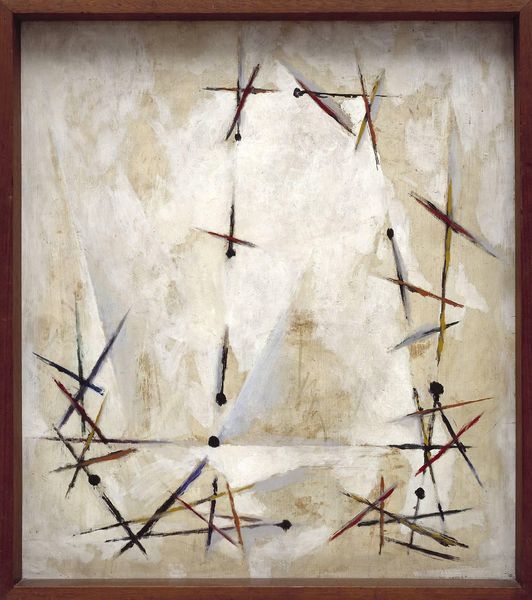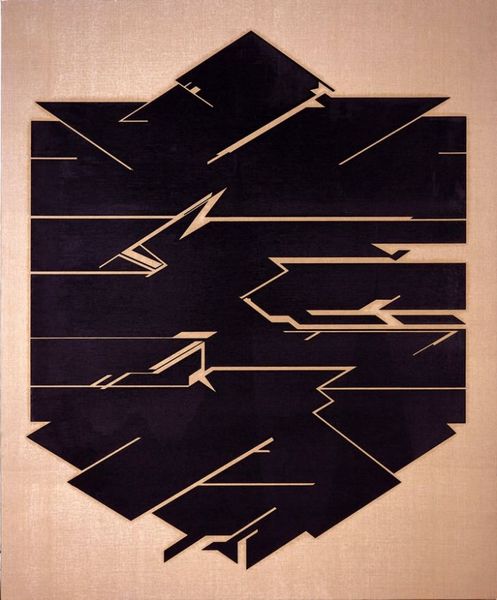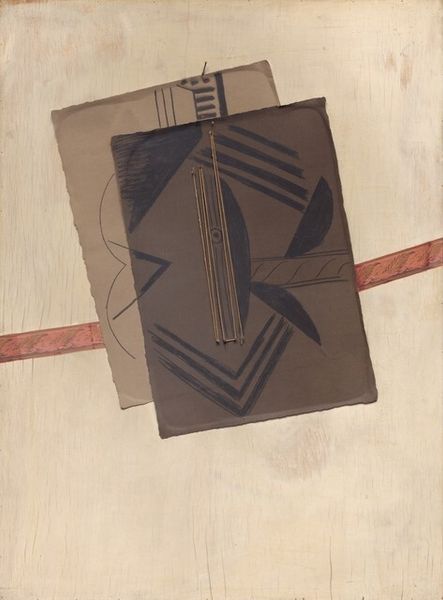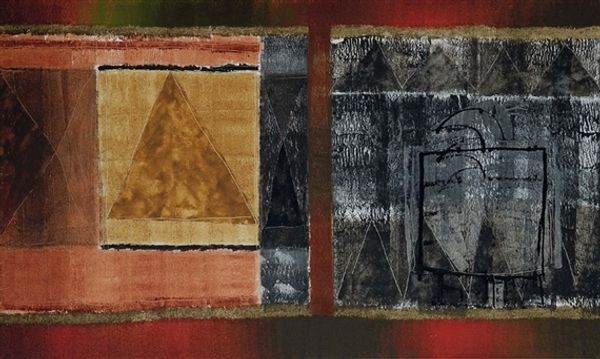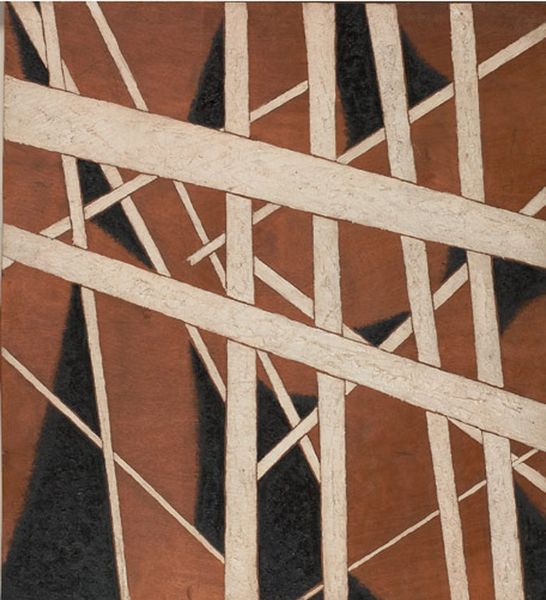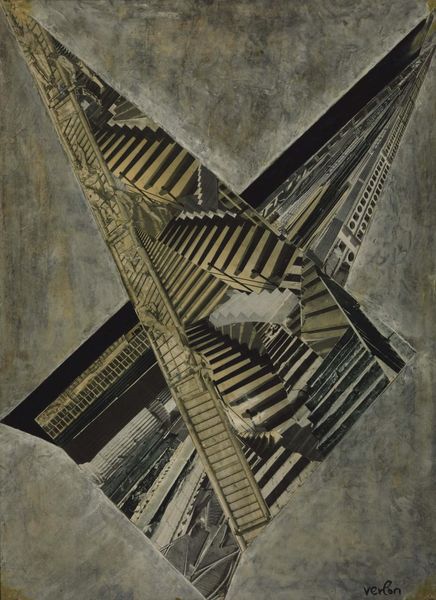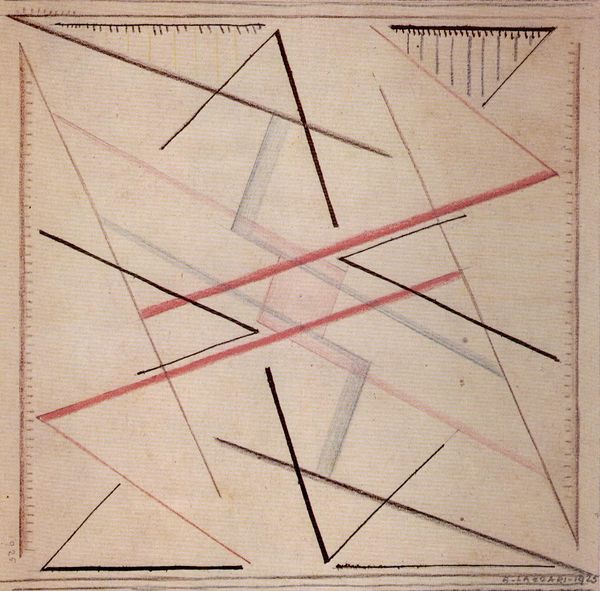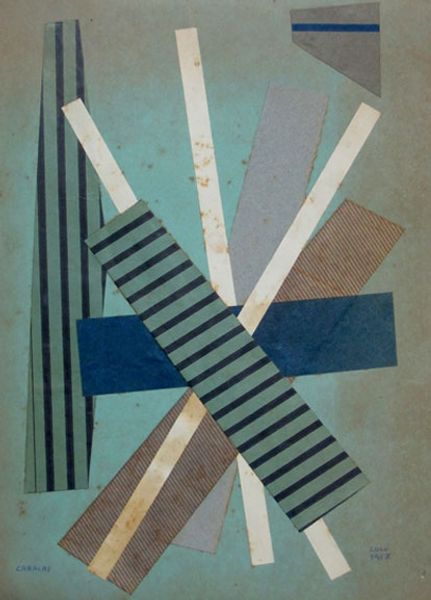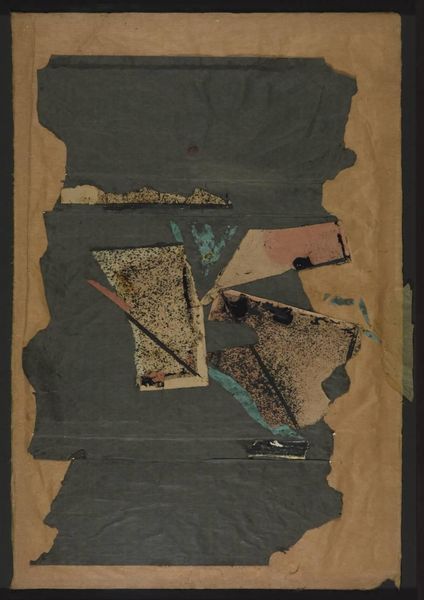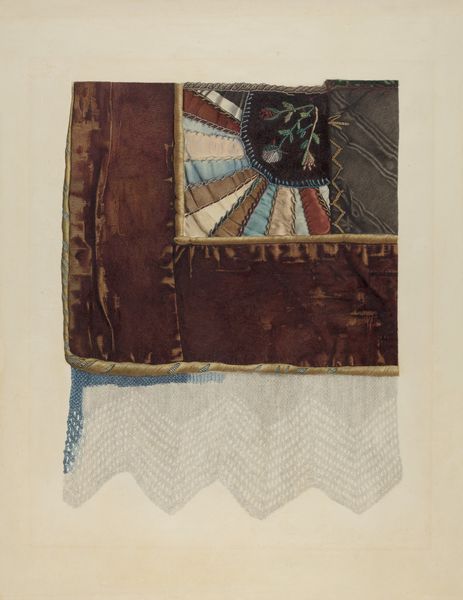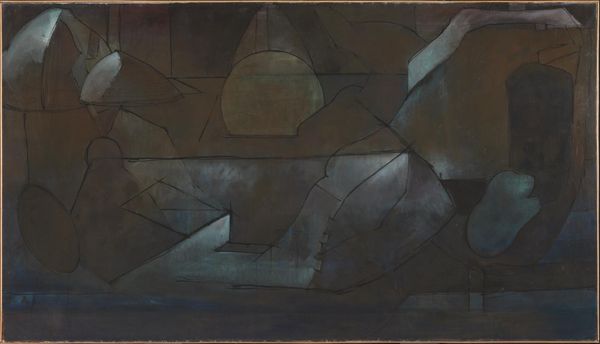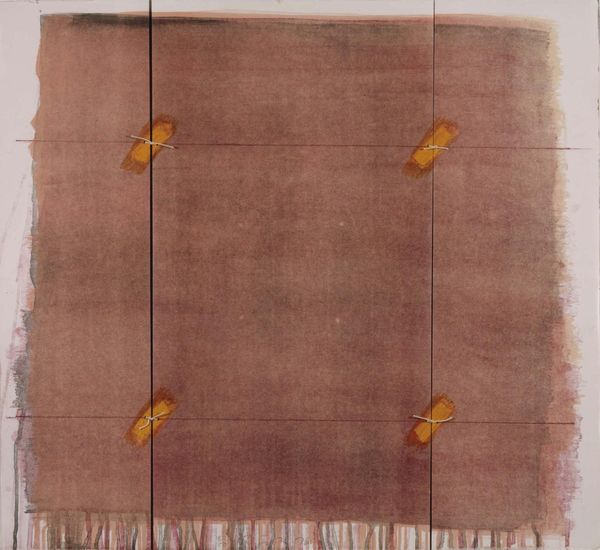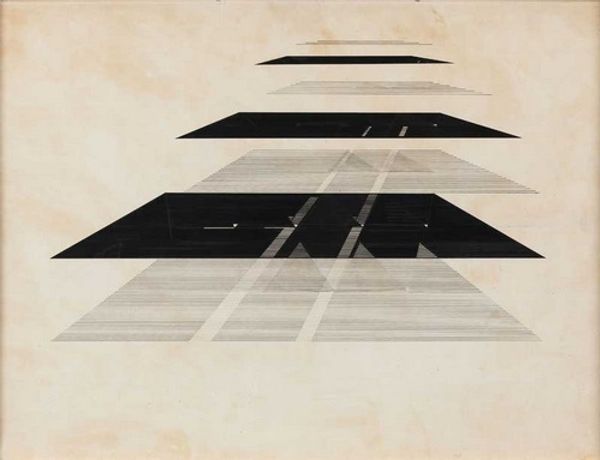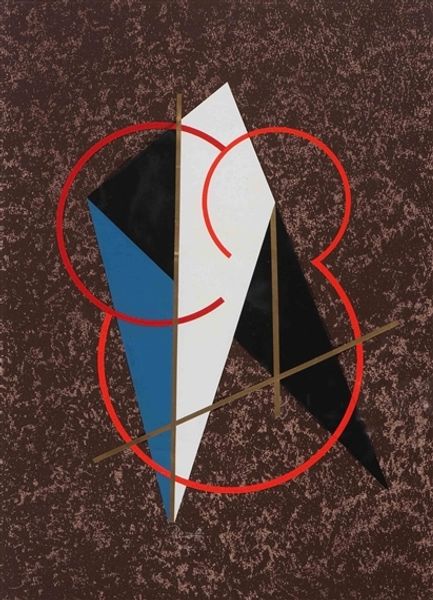
Copyright: Cesar Domela,Fair Use
Curator: Here we have Cesar Domela’s “Relief #12C” from 1936. It’s a mixed-media relief. Editor: It’s unexpectedly playful. All those geometric shapes layered—the triangle almost feels rebellious, interrupting the calmer backdrop of the patterned square and circle. Curator: The deliberate arrangement of geometric forms, executed in mixed media, engages in a visual discourse concerning the socio-political transformations happening across Europe in the interwar years. How can abstract languages be adopted as vehicles for social change and expression of personal and collective agency? Editor: And those colors, the pale pink juxtaposed with black and the warmth of the wood grain. Color holds powerful symbolic potential. It seems to echo the anxieties of its time through subtle visual codes, suggesting the instability beneath apparent order. Are we meant to find comfort in the repeated patterns, or are they a form of imposed structure, reflective of increasing regulations in a quickly changing world? Curator: Precisely. And if you consider that the period produced both radically formalist movements, like Constructivism, and state-sponsored art under totalitarian regimes, Domela seems to push for a visual vocabulary unbound by propagandistic use, suggesting the formal possibilities that can exist for representing cultural resistance and ideological freedom. Editor: It reminds me of flags, especially national flags that visually unite an imaginary community—but the recognizable visual cues have been abstracted. Yet there's also something architectural about it—an unrealized design for some forgotten utopian project. I am so fascinated by the textured, reptilian looking surface. Curator: It's through the interplay of various textures and industrial materials—wood, metal, paint, maybe even early plastics—that Domela explores the potential of art to challenge material hierarchies, much as one might confront class stratification in a society aspiring towards equality. The relief challenges conventional painting's claim of unique image-making through embracing new forms of mechanical creation. Editor: When I look at it knowing the historical background, I now recognize it as more than geometric harmony, now there is a distinct impression of struggle for freedom of visual expression. Curator: I concur. Its significance extends beyond formal aesthetics; it’s a historical marker. Editor: This piece really got me thinking, specifically, about the way we read symbols in art. Thanks for sharing.
Comments
No comments
Be the first to comment and join the conversation on the ultimate creative platform.
